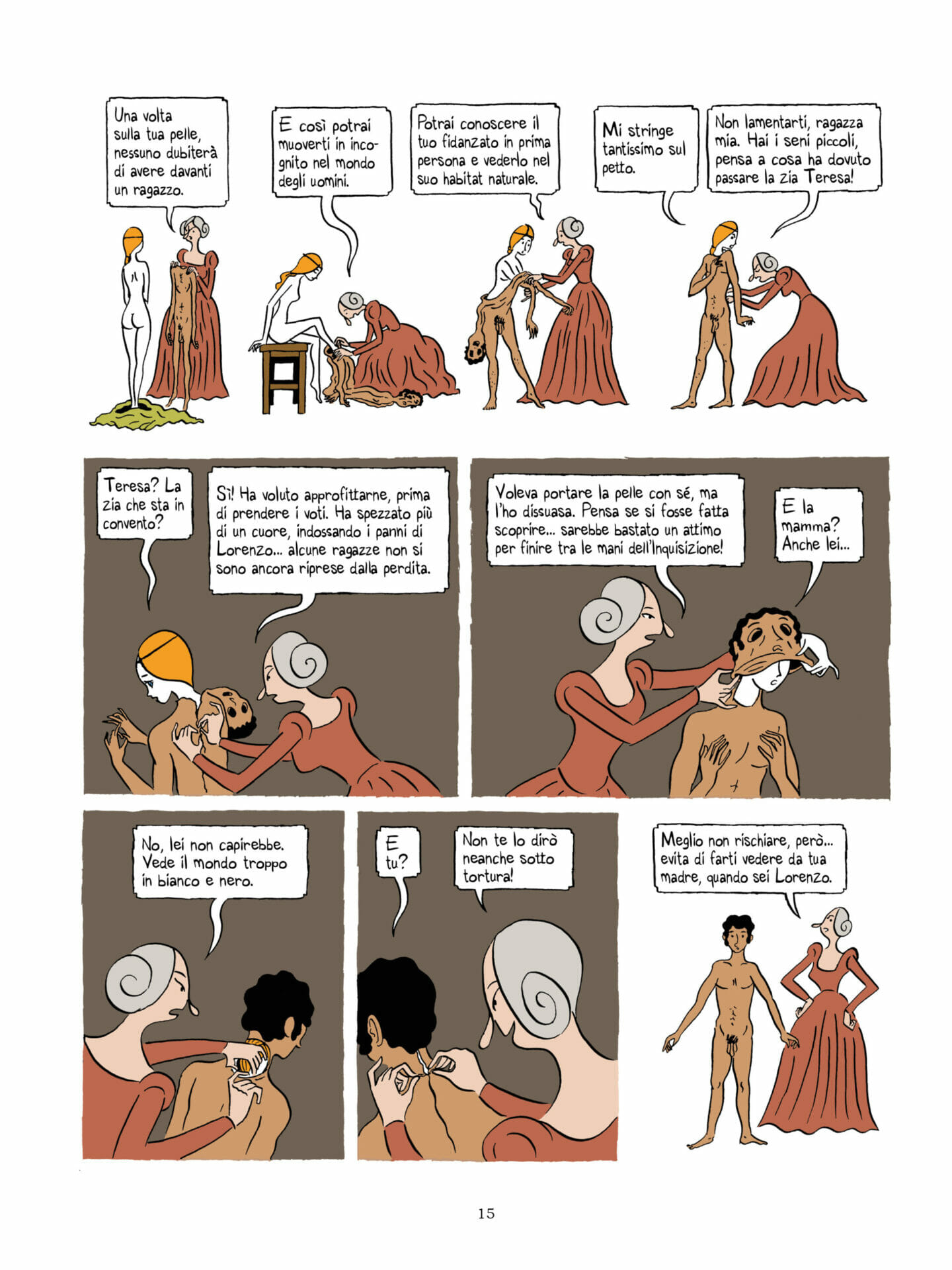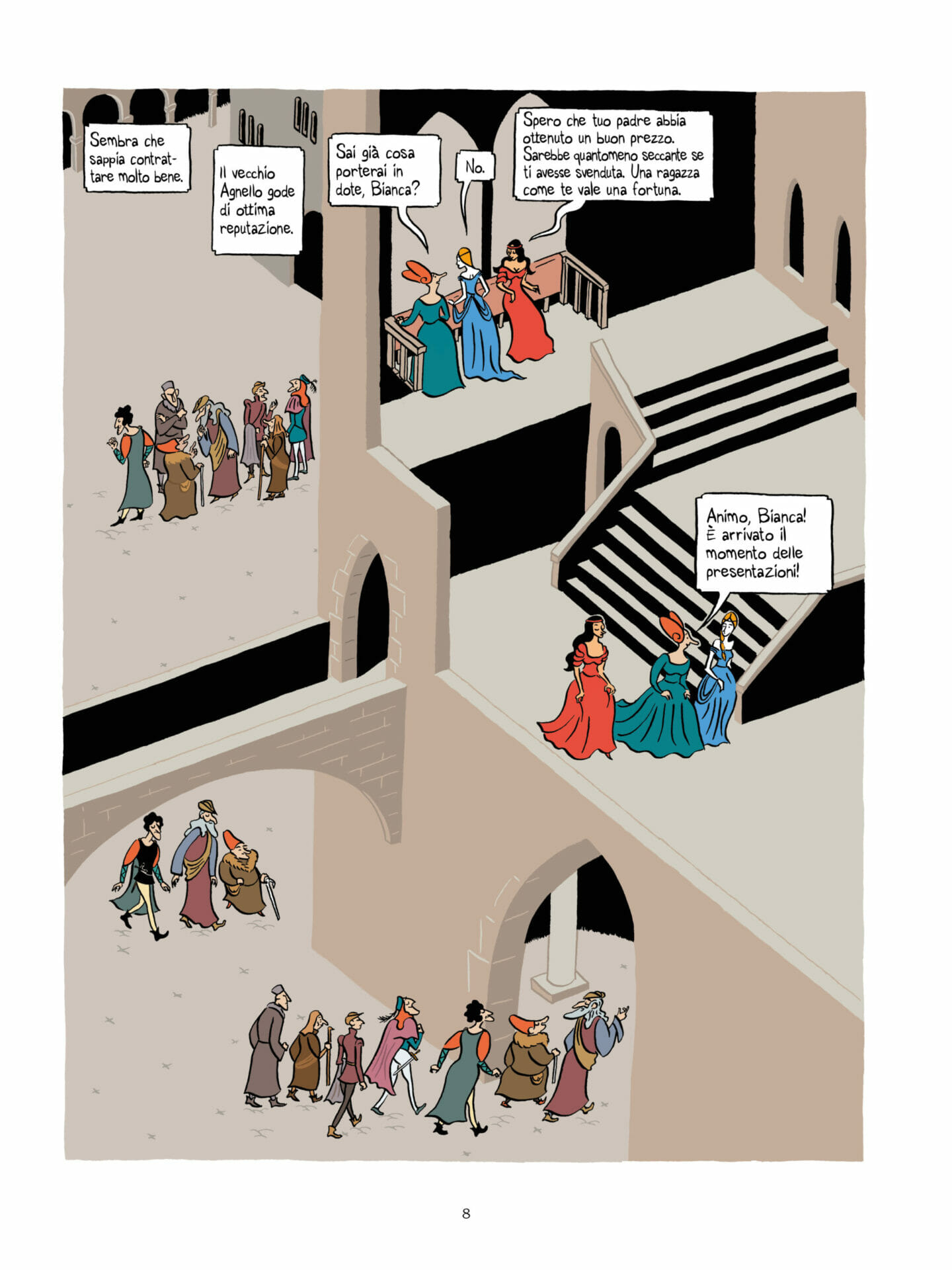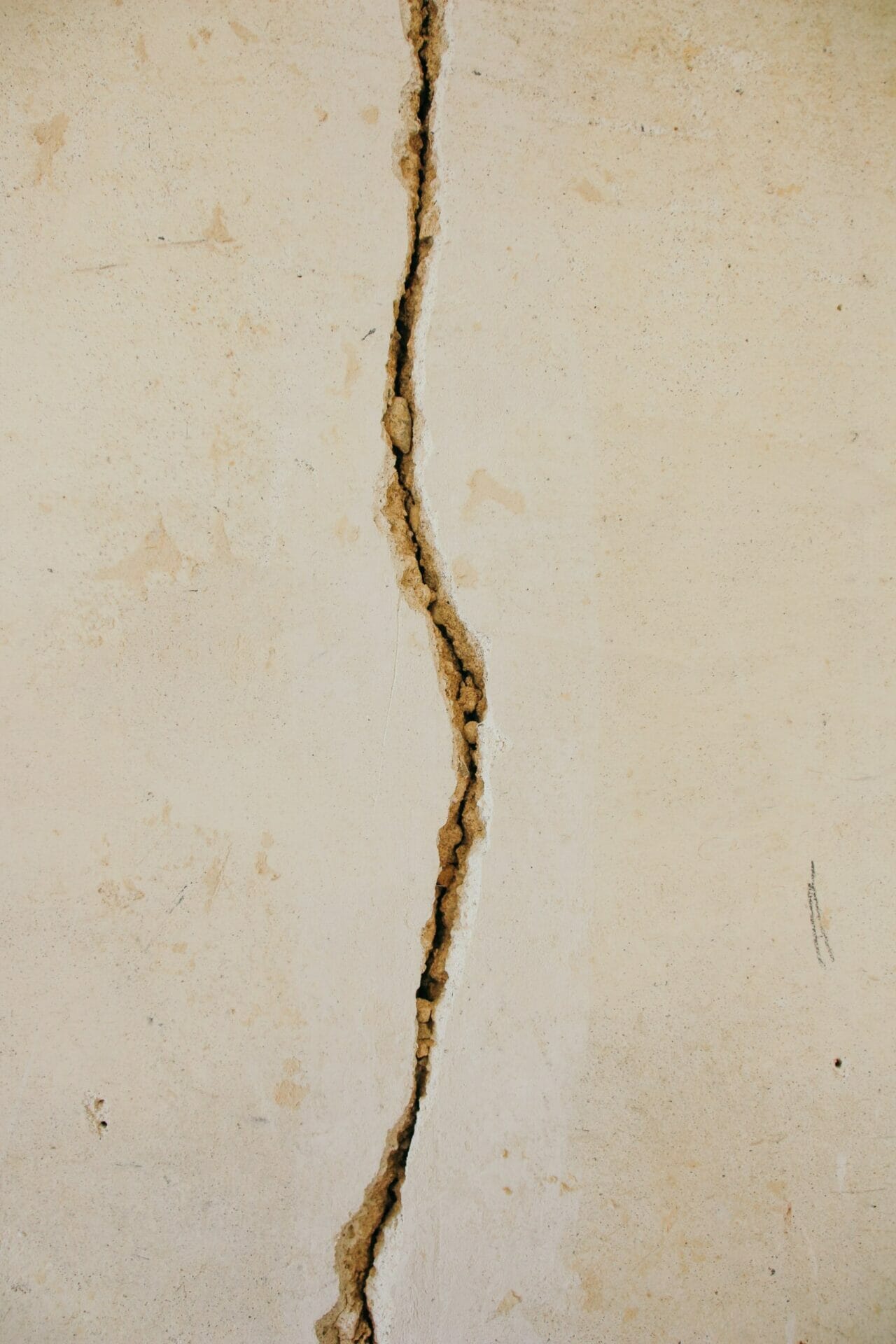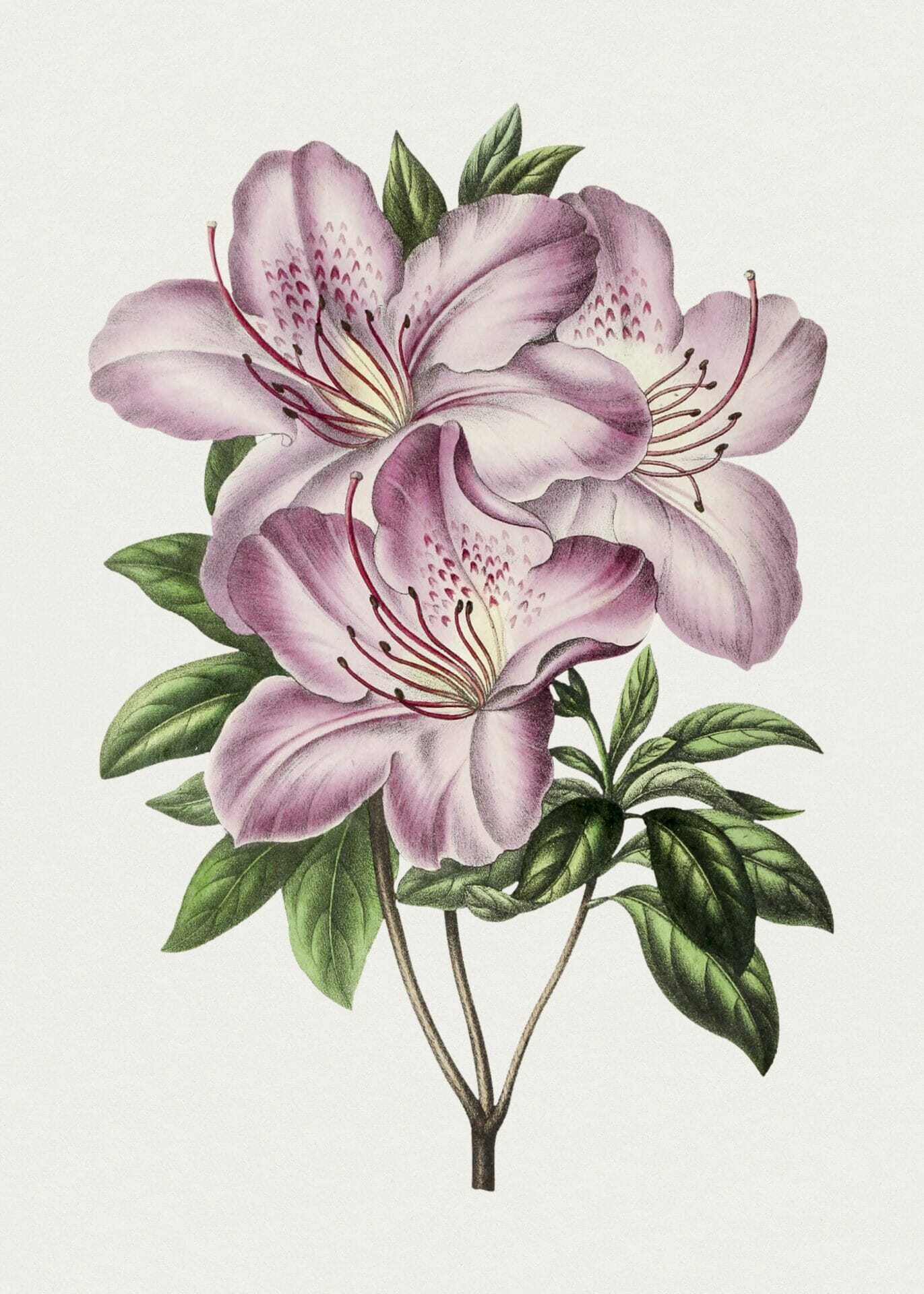
Peau d'homme | A peek inside a different world
Year
Format
Peau d’homme takes place in Italy, in the 15th-16th century. Bianca is on the verge of an arranged marriage with a man she doesn’t know. She can’t accept that and so decides to hide in the skin of a man, to better understand the world of men before she makes such a big step.
The story tackles modern themes of social politics and looks inside the darkest sides of both men and women. It allows readers, even, to confront some of their shortcomings and vicissitudes.
The French graphic novel is written by Hubert Boulard, known mononymously as Hubert, and drawn by Zanzim, the pen name of Frederic Leutelier. It earned more prizes than most other comic books in 2021, as well as the Wolinski Prize in 2020, the ACBD Critique Prize, the RTL Comic Book Prize, and the Prix Landerneau BD. A great number of achievements, that sadly the writer was never able to witness. Hubert passed away in the February of 2020, at only 49 years of age. He has created many works, of which Peau d’homme (literally “the skin of a man”) is the last and considered by many his testament. The graphic novel was published by Glénat in its original French edition, and by BAO Publishing in its Italian edition. On the first page, a dedication touches the reader: “Hubert, this book is for you. Zanzim.”

Learning to love one own’s skin
The protagonist Bianca is a young noble girl during the Renaissance period. She is troubled by the practice of arranged marriage. Through her eyes, we see the struggle of having to spend your life with a person you barely know. However, it is not only her fiancé Giovanni that is a stranger to her. The whole world of the male gender, forbidden and hidden from her since she was a child, is obscure and intimidating.
As she finds out about Bianca’s worries, her godmother unveils a family secret: the skin of a man called Lorenzo. Hidden in this skin, the women of her family were able to explore that mysterious world. Bianca is the next holder of the secret, but she has to be careful not to get carried away by the power of the skin. The possibility to speak freely and walk anywhere is tempting. Peau d’homme, however, looks into the importance of appreciating who you are and the pro and cons of either being a man or a woman. The element of switching bodies also allows exploring what it means to inhabit a different gender, somehow recalling Makoto Shinkai’s Your Name.
Experimenting with framing and color
Zanzim’s art represents bodies wholly, entailing nudities coherent with the message of the graphic novel. The drawing style resembles medieval frescos and paintings, with its flat figures and neat colors. The cartoonist makes an effort to be faithful to the historical setting also thanks to characters’ poses or panels containing multiple actions, such as the ones in court or a tavern.
In the bigger panels, the author experimented with some innovative framing, such as the one in which Bianca explores Lorenzo’s body. The absence of any framing connects each vignette. The use of color is basic but effective. In scenes of violence, Zanzim makes extensive use of red. For romantic and sweet scenes, instead, everything has a blue tint. In a completely mute scene, portraying Bianca’s nightmare, the use of only red and blue hues makes it jump to the eye as eerie and otherworldly.

Women and society from the Renaissance to the present
Peau d’homme’s main focus is feminism, in its many forms. Like an Italian Jane Eyre, Bianca is fully aware of what disadvantages society brings to her as a woman and has full intention of fighting against it. She voices the right for women to express and celebrate their sexuality and their femininity. Because of her modern ideals, she happens to fight with her mother and her friends. As a matter of fact, Peau d’homme takes the approach that it is, perhaps, through what one might term sub-conscious misogyny that society can often appear to get away with so much.
Other important themes are homosexuality and the effect that sexism has on men. Bianca and her friends are not the only ones to suffer. Many men also have to hide their true selves, in favor of a more stereotypical idea of masculinity. In the skin of Lorenzo, Bianca can see that clearly and figure out its root: hypocrisy, especially in the religious institution that at the time had the power to shape a culture.
This is a theme that the recent Netflix miniseries Unorthodox also discusses, which touches on feminism as well. But before all of the social issues, Peau d’homme is a love story. An unusual one, as the protagonist says herself. It is the story of two people that learn to behave and live in their best form, regardless of how different that may be from what was expected of them.
Tag
Buy a ☕ for Hypercritic









